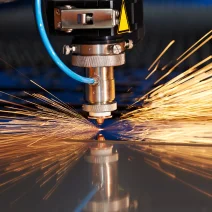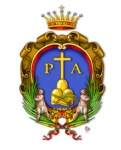Contents
As some forms of matter go from solid to liquid they go through a third state, which displays properties of both phases. This anisotropic liquid is known as a liquid crystalline or mesomorphous state. Using DSC, it is possible to observe the small energy changes that occur as matter transitions from a solid to a liquid crystal and from a liquid How to Create a SharePoint Online Project Site: Step-By-Step crystal to an isotropic liquid. Differential scanning calorimetry can be used to measure a number of characteristic properties of a sample. Using this technique it is possible to observe fusion and crystallization events as well as glass transition temperatures Tg. DSC can also be used to study oxidation, as well as other chemical reactions.

DSC is used widely for examining polymeric materials to determine their thermal transitions. Important thermal transitions include the glass transition temperature , crystallization temperature , and melting temperature . The observed thermal transitions can be utilized to compare materials, although the transitions alone do not uniquely identify composition. The composition of unknown materials may be completed using complementary techniques such as IR spectroscopy. Tm depends on the molecular weight of the polymer and thermal history. The 2000s have witnessed the rapid development of Fast-scan DSC , a novel calorimetric technique that employs micromachined sensors.
The Basics of PowerShell DSC (Desired State Configuration)
To do this, we need to run another script on the pull server. After pulling a configuration from a pull server, DSC ensures the copy went correctly by verifying a checksum. DSC is a big topic, and I highly encourage you to check out thisTechNet article on the Windows PowerShell DSC Overview. This will give you a good start, but there is plenty of great information out there on this topic. If you’re new to DSC, you should first learn the basics before setting up your own pull server. Pull – managed computers connect to a file server , download and apply settings on their own.
For DSC, we use the Configuration keyword to define the configuration. In this example, WindowsFeature is the component we are configuring. You can see that we define three separate instances of the WindowsFeature component, one for each component we want to configure. Each configured instance needs its own unique name, as the name is used as a key when converting into the MOF file. Every component you configure will have an Ensure property, which can have the value of either Present or Absent. When you want to make sure the component exists, you specify Present.
DSC: Dynamic Statistical Comparisons
It is important to note that DSC can only detect changes that it has been told to care about. Using our example, if someone had installed the Web-Ftp-Server Windows Feature, our DSC PowerShell script would not report anything. However, if someone had removed Web-Default-Doc, DSC would report that the feature was no longer in the desired state.
- For an example of the mentioned hybrid approach, refer to this post in the series, where we configure PowerShell DSC to deploy like an application.
- Consequently, less pure compounds will exhibit a broadened melting peak that begins at lower temperature than a pure compound.
- Another emerging area of application of FSC is physical chemistry, with a focus on the thermophysical properties of thermally labile compounds.
- The MOF file generated is always the name of the Node inside the Configuration block.
The heat of the heater is provided into the sample and the reference through the heat sink and heat resistor. Heat stream is corresponding to the heat distinction of heat sink and holders. The heat sink has enough heat limit contrasted with the sample. If the sample happens endothermic or exothermic marvels, for example, transition and response, these endothermic or exothermic wonders are repaid by a heat sink. This is because of the retention of heat by the sample as it experiences the endothermic stage transition from strong to fluid. In like manner, as the sample undergoes exothermic processes.
There are two methods that DSC can use to apply the configuration to your machine; Push and Pull. You can also create a sort-of hybrid approach using automated deployment tools such as Octopus Deploy. Open-source software Wikipedia The result of a DSC experiment is a curve of heat flux versus temperature or versus time. Now that our configuration is set up, we need to configure our test server to point to our new pull server.
You can log in and check on the remote nodes and validate if these resources are in the desired state. A DSC configuration data file is just a bunch of Hash tables that can contain other Hash tables or Arrays and typically have a psd1 file extension. DSC configuration data must have at least one key named AllNodes. The calorimetric constant will vary from instrument to instrument, and can be determined by analyzing a well-characterized sample with known enthalpies of transition. Is an independent consultant, technical writer, trainer and presenter.
Testing the Node configuration
For the polymer chemist, DSC is a handy tool for studying curing processes, which allows the fine tuning of polymer properties. The cross-linking of polymer molecules that occurs in the curing process is exothermic, resulting in a negative peak in the DSC curve that usually appears soon after the glass transition. Glass transitions may occur as the temperature of an amorphous solid is increased. These transitions appear as a step in the baseline of the recorded DSC signal.
Whether less or more heat must flow to the sample depends on whether the process is exothermic or endothermic. For example, as a solid sample melts to a liquid, it will require more heat flowing to the sample to increase its temperature at the same rate as the reference. This is due to the absorption of heat by the sample as it undergoes the endothermic phase transition from solid to liquid. Likewise, as the sample undergoes exothermic processes less heat is required to raise the sample temperature.

Both the sample and reference are maintained at nearly the same temperature throughout the experiment. Generally, the temperature program for a DSC analysis is designed such that the sample holder temperature increases linearly as a function of time. The reference sample should have a well-defined heat capacity over the range of temperatures to be scanned. Differential scanning calorimetry is a system wherein the heat flux to the example is checked against time or temperature while the temperature of the sample, in a predetermined air, is customised. Practically speaking, the distinction in heat flux to a pan containing the example and an empty pan is checked.
The instrument utilised is a differential scanning calorimeter or DSC. The DSC is economically accessible as a power-compensating DSC or as a heat-flux DSC. As the temperature increases, an amorphous solid will become less viscous. At some point the molecules may obtain enough freedom of motion to spontaneously arrange themselves into a crystalline form. This transition from amorphous solid to crystalline solid is an exothermic process, and results in a peak in the DSC signal. As the temperature increases the sample eventually reaches its melting temperature .
Oxidative stability
This is due to the sample undergoing a change in heat capacity; no formal phase change occurs. The process of creating the DSC pull server used to bemuchharder. Now, with the introduction of the xPsDesiredStateConfiguration DSC resource, things are far easier. I’ve stolen a few scripts from thisawesome article about configuring a pull server in DSC from System Center Central.
Any oxidation that occurs is observed as a deviation in the baseline. Such analysis can be used to determine the stability and optimum storage conditions for a material or compound. DSC equipment can also be used to determine the Oxidative-Onset Temperature of a material. In this test a sample are exposed to an oxygen atmosphere and subjected to a constant rate of heating (typically from 50 to 300 °C). The DSC heat flow curve will deviate when the reaction with oxygen begins . Both OIT and OOT tests are used as a tools for determining the activity of antioxidants.
But this time, we’re going to create it for another server on the network. To apply the settings from the DSC configuration file to the server, you need to apply the settings from the MOF file. PowerShell DSC takes the components configured with PowerShell and converts them into MOF files for WMI to use to configure a machine.
Adam specializes in consulting and evangelizing all things IT automation mainly focused around Windows PowerShell. Adam is a Microsoft Windows PowerShell MVP, 2015 powershell.org PowerShell hero and has numerous Microsoft IT pro certifications. He is a writer, trainer and presenter and authors IT pro course content for Pluralsight. He is also a regular contributor What is Fullstack JavaScript to numerous print and online publications and presents at various user groups and conferences. You can find Adam at his site listed below or on Twitter at @adbertram. Without getting into too much detail, we’re ensuring the DSC Windows feature we just installed and creating two websites in IIS; both configured to be used for DSC specifically.
For instance, what happens when your Chief Information Security Officer changes the allowed protocols of your web servers? What if the newly implemented security standards break a quarterly interface with a business partner? A common method of maintaining consistency in your infrastructure is to create base images for the different types of servers you need to spin up.
The key advances of this technique are the ultrahigh scanning rate, which can be as high as 106 K/s, and the ultrahigh sensitivity, with a heat capacity resolution typically better than 1 nJ/K. Nanocalorimetry has attracted much attention in materials science, where it is applied to perform quantitative analysis of rapid phase transitions, particularly on fast cooling. Another emerging area of application of FSC is physical chemistry, with a focus on the thermophysical properties of thermally labile compounds.
By watching the distinction in heat stream between the sample and reference, DSC can quantify the measure of heat retained or discharge during such transition. When a sample experiences a physical change, for example, a stage transition, pretty much heat should stream to it than to the reference to keep up both at a similar temperature. Regardless of whether a higher amount of less heat must stream to the sample relies upon whether the procedure is exothermic or endothermic. For e.g.as an active sample melts to the fluid, it will require more heat streaming to the sample to expand its temperature. DSC is widely used in the pharmaceutical and polymer industries.
Several third-party solutions such as Ansible, Chef, and Puppet exist, but they are paid Linux-based products. For Windows folks, there is a free and Windows-centric option available; PowerShell Desired State Configuration . In this PowerShell DSC tutorial, I’ll show you how to get started with PowerShell DSC and provide some basic examples of how to use it. Therefore, the temperature distinction between the sample and the reference is kept steady. The distinction between the measure of heat provided to the sample and the reference is relative to the temperature contrast of the two holders.
